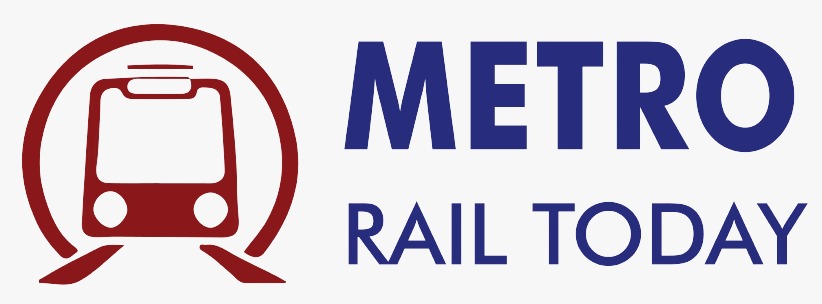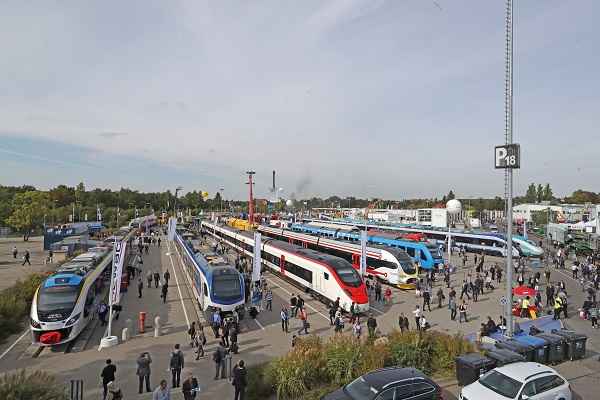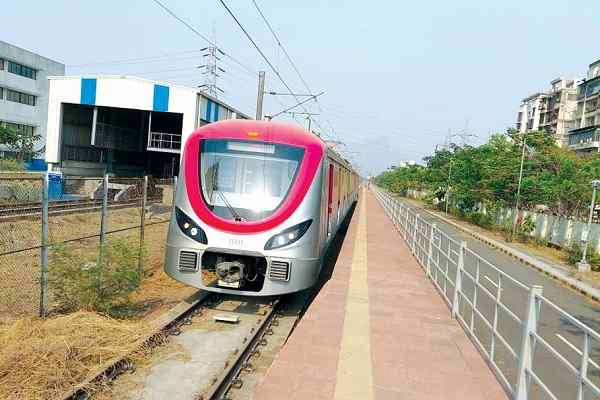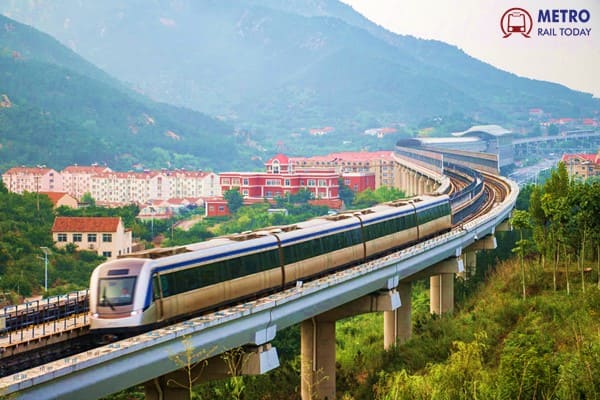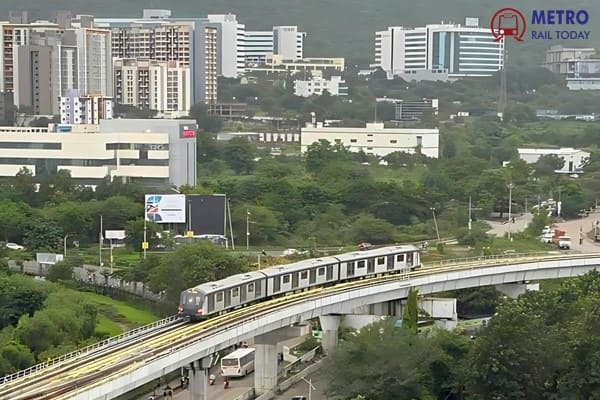 HG Infra Engg–Kalpataru JV Bags ₹1,415 Crore EPC Contract for Thane Metro Rail Project
HG Infra Engg–Kalpataru JV Bags ₹1,415 Crore EPC Contract for Thane Metro Rail Project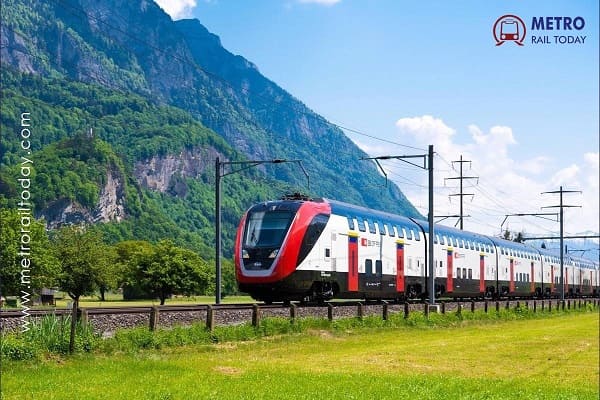 RITES targets African Rail Market with New Financing Model for Cost-Effective Rolling Stock
RITES targets African Rail Market with New Financing Model for Cost-Effective Rolling Stock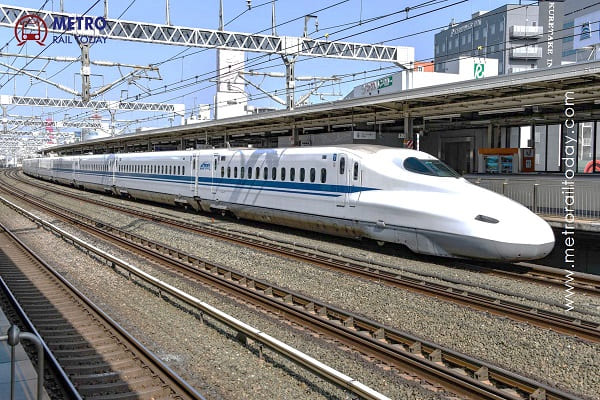 India’s First Bullet Train to begin Operations on 100-km Surat–Vapi stretch by August 2027
India’s First Bullet Train to begin Operations on 100-km Surat–Vapi stretch by August 2027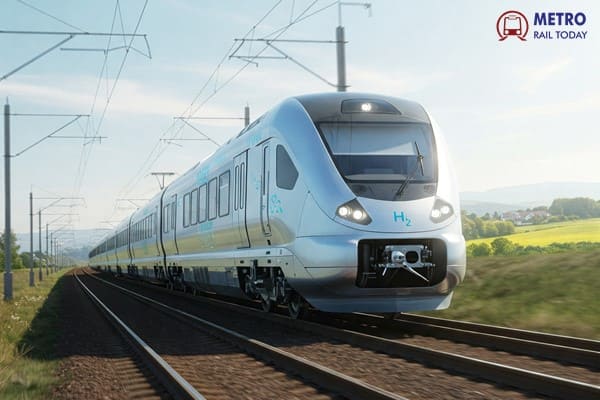 Railway eyes record ₹3 Trillion Capex in FY27 to accelerate modernisation and High-Speed Expansion
Railway eyes record ₹3 Trillion Capex in FY27 to accelerate modernisation and High-Speed Expansion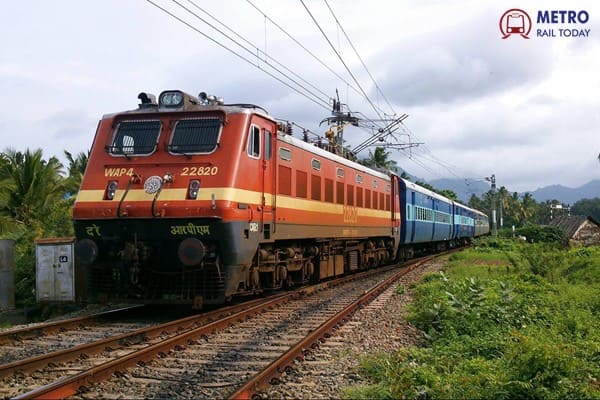 The Future of Railways in India: From Gauge Conversion to High-Speed Corridors
The Future of Railways in India: From Gauge Conversion to High-Speed Corridors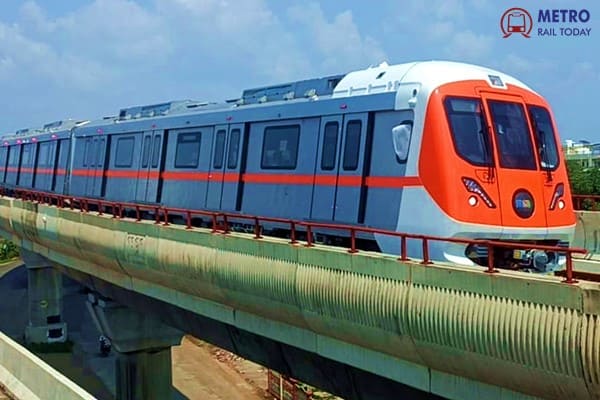 CMRS concludes 3-Day Safety Inspection of Bhopal Metro Priority Corridor
CMRS concludes 3-Day Safety Inspection of Bhopal Metro Priority Corridor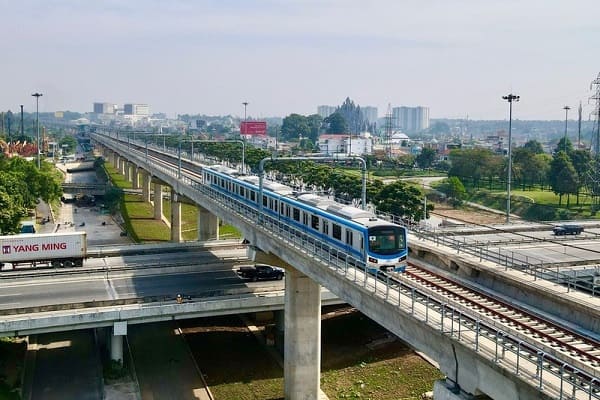 Ho Chi Minh City to invest USD19.67 billion to develop 232 km of Urban Railways by 2030
Ho Chi Minh City to invest USD19.67 billion to develop 232 km of Urban Railways by 2030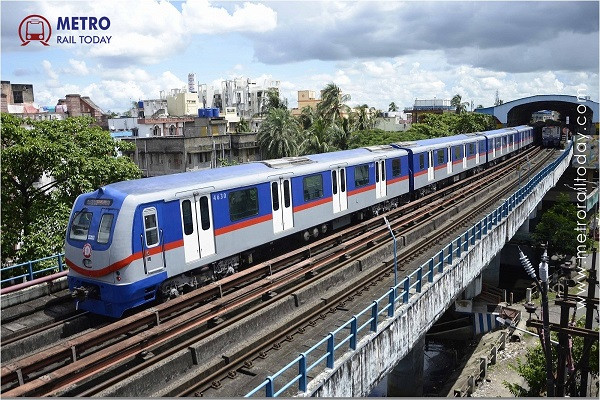 Kolkata Metro Blue Line to receive AI-Powered Security upgrade by March 2026
Kolkata Metro Blue Line to receive AI-Powered Security upgrade by March 2026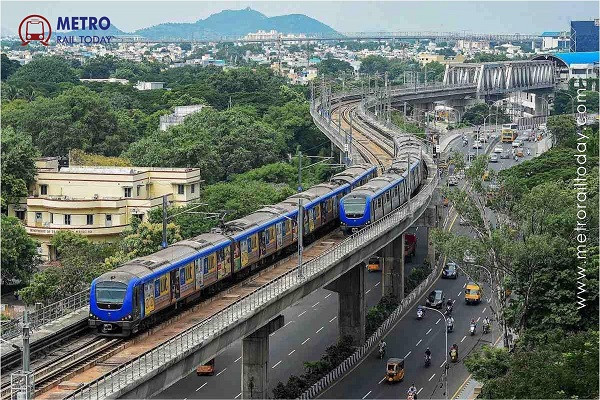 Central Govt returns Coimbatore and Madurai Metro proposals, Citing low population in cities
Central Govt returns Coimbatore and Madurai Metro proposals, Citing low population in cities SNTP Technologies: India's Largest Rebar Coupler Maker Setting New National Standards
SNTP Technologies: India's Largest Rebar Coupler Maker Setting New National Standards
Riyadh Metro: Know all about Saudi Arabia's largest 176-km driverless Mass Rapid Transit System

The Riyadh Metro network is the backbone of the city’s public transport system, a key milestone of the ambitious plans outlined by the Royal Commission for Riyadh City (RCRC) to improve mobility and enhance quality of life. The metro network is driverless, fully automated with Unattended Train Operation (UTO) technology and spans over 176 kilometers across 6 lines and 85 stations of which of which 4 iconic stations: STC, KAFD, Qasr Al Hokm and Western Station. With a maximum capacity of 3.6 million daily passengers, it connects key areas, business centers, and cultural landmarks, including King Khalid International Airport, King Abdullah Financial District (KAFD), universities, and Riyadh’s main malls. In line with Vision 2030, the Riyadh Metro enhances the public transportation system and contributes significantly to the development of the services and logistics sector, confirming the city’s commitment to smart and sustainable urban development.
Riyadh Metro in Numbers
- 6 lines
- 176 km total track length
- 183 driverless trains
- 19 Park & Ride
- Maximum capacity of 3.6 million passengers
- 3 consortia of 19 global companies from 13 countries including USA, France, Spain, Germany, Japan, South Korea, Canada, UK.
- More than 65,000 employees at the peak of construction phase.
- 33,000 km of cables and service pipes, equivalent to the distance from Riyadh to New York 3 times.
- The excavation outputs represent 71 million m³, equivalent to 65 Faisaliah Towers
- Reinforcement steel works constitute 745,000 tons, equivalent to 106 Eiffel Tower
85 stations including 4 iconic stations
Spanning 176 kilometers across 6 lines Riyadh Metro is the backbone of the Riyadh Public Transport (RPT) (previously the King Abdulaziz Project for Riyadh Public Transport), managed by the Royal Commission for Riyadh City (RCRC), and comprises a comprehensive network spanning 176 kilometers across 6 main lines on three levels. 39.7% of the network is underground, while 18.9% is at surface level and 49.6% is elevated.
The 6 metro lines are as follows:
- Blue Line (Line 1): Olaya - Batha Street, with a total length of 38 km.
- Red Line (Line 2): King Abdullah Road, with a total length of 25.1 km.
- Orange Line (Line 3): Medina Road – Prince Saad bin Abdulrahman Al-Awwal, with a total length of 41.1 km.
- Yellow Line (Line 4): King Khalid International Airport, with a total length of 29.7 km.
- Green Line (Line 5): King Abdulaziz Road., with a total length of 13.3 km.
- Purple Line (Line 6): Abdulrahman bin Auf Street – Sheikh Hassan bin Hussein bin Ali, with a total length of 28.8 km.
Riyadh Metro features a maximum capacity of 3.6 million passengers daily and complements the recently launched bus network as well as the public transport network in the city. The Metro network will cover the densely populated areas, destinations with heavy traffic, the downtown area, public facilities, as well as commercial, educational, scientific, medical, sports, and entertainment institutions. The network will also cover King Khalid International Airport, the public transport center, King Abdullah Financial District (KAFD), King Salman Park, Sports Boulevard, King Fahd International Stadium, major projects, as well as a number of attractions and event areas in the city.
Fully automated (driverless) trains
The entire project was designed in accordance to the latest technological and design standards, including notably the use of fully automated (driverless) operation technology, whereby the trains are operated through the “Riyadh Public Transport Control Center” (TCC) – a 60,000 square meter facility established within the project (in close proximity to the depot of Lines 4 & 6) located to the West of Princess Nourah Bint Abdulrahman University. The TCC operates the Bus fleet of RPT in the Saudi capital, and ensures complementarity between the bus and metro networks, while also managing passenger services, surveillance and safety, administrative activities, training, and support services for the project.
85 stations representing a wealth of added value to the city
The project features 85 metro stations, including 4 main stations where several lines intersect. The stations boast modern architecture and were built on several levels, with 34 elevated stations, 4 surface stations, and 47 underground stations.
The Riyadh Metro stations offer passengers all types of amenities, safety features, A/C services, as well as trip information systems, while several stations house shops, commercial services, and carparks. The project’s four main stations (King Abdullah Financial District (KAFD), STC Station, Qasr Al Hokm , and Western Station) are considered one of the main attractions given their locations in densely populated areas, and connecting several metro and bus lines; they also offer a number of supporting services, including customer service, carparks, ticket counters, and shops and commercial services, as well as several restaurants and coffeeshops and outlets available for investment.
The network’s four main stations also represent a wealth of added value to the Riyadh Public Transport and contribute to the improvement of the city’s urban environment given the use of sustainable construction materials, while taking into account operational aspects and future maintenance requirements.
The design of the stations was entrusted to four of the largest architecture firms in the world, following an international competition organized by RCRC. Zaha Hadid Architects (United Kingdom) was entrusted with the design of the King Abdullah Financial District (KAFD) station, and Snøhetta (Norway) was entrusted with the design of the Qasr Al Hokm station, while Gerber Architekten (Germany) designed of the STC station, and Omrania (Kingdom of Saudi Arabia) was the architect for the Western Station.
19 Park & Ride facilities and 7 depots
The project includes 19 Park & Ride facilities on a number of lines, covering the majority of the city, with capacity ranging from 200 to 600 cars. The facilities were added to complement the metro network, instead of using private vehicles to travel inside the city. Additionally, 7 maintenance depots were added along the network’s edges.
183 trains with a modern design
The project comprises 183 trains with a total of 448 cars that were manufactured by three of the largest train manufacturers in the world: Siemens (Germany), Bombardier (Canada), and Alstom (France), and feature a modern and unified design by Avant Premiere (France) in the shape of a “smiling face” that welcomes the capital’s residents and visitors to Riyadh Metro. Additionally, different colors were used for every line on the train cars, as well as the sides of bridges and signposts allowing passengers to move seamlessly between the network’s lines.
The trains’ interior reflects Saudi culture, with seat covers adorned with designs inspired by Riyadh’s traditional architecture and elements that evoke the silhouette of palm trees.
The network’s train sets comprise two or four cars divided into three classes (First, Families, Singles) via flexible separators, and the Operation Control Center may dedicate entire cars to a specific class should the need arise.
The project’s trains feature high standards in terms of comfort and safety, and boast state-of-the-art equipment and technology in the global train industry, from electronic displays, to audiovisual information systems that allow communication with passengers, internet connectivity, and communication, lighting, and A/C systems, as well as automatic door control systems, security and safety systems, and CCTV cameras inside the cabins.
The Riyadh Metro train cars were also designed to accommodate the needs of people with disabilities, offering features like clear floor space for mobility aids, audio induction loops for the hearing impaired, and tactile indicators for the visually impaired, alongside stringent and maintenance requirements, in accordance with the natural environment of the Saudi capital. With that in mind, all internal and external components and fittings were manufactured using materials of the highest quality and sturdiness, to enable them to endure the city’s weather.
Security and safety requirements
The Riyadh Metro meets all security and safety requirements for passengers and facilities. This was accomplished by equipping cars and stations with advanced surveillance systems that rely on cameras, early warning systems, and fire protection systems, and by installing safety systems throughout tunnels and bridges, as well as communication systems that allow immediate contact with the TCC and competent security agencies, if need be. Additionally, a series of operational tests were conducted on all components of the project including cars, systems, services, and amenities, in order to make sure they were performing to the highest standard.
3 international consortia from 13 countries for the implementation phase
RCRC had established three consortia for the execution of the project (BACS, FAST, and ANM) comprising of 19 major global companies from 13 countries that helped build some of the world’s most famous train and metro networks in Paris, London, Washington, San Francisco, Singapore, Hong Kong, Sydney, Vancouver, Toronto, and Barcelona, among others. Each consortium features companies specializing in various fields, including train manufacturing, metro tunnel boring, civil works, bridge and tunnel works, control and operating systems, mechanical and electrical works, design works, and megaproject management.
Complementarity with the Riyadh Bus network
The Riyadh Metro network complements the Riyadh Bus network, which represents the second component of the Riyadh Public Transport (RPT). The bus network is the main feeder of the metro network and the main passenger carrier within neighborhoods and throughout the city. The Riyadh Bus network covers the entire city and comprises 80 lines spanning 1,900 kilometers, and includes 2,900+ stations and stops, as well as 842 buses of various sizes and capacities. Since its launch by the Royal Commission for Riyadh City, the Riyadh Bus network has served over 38 million passengers.
Facts & Figures
The Riyadh Metro network is the backbone of the city’s new Riyadh Public Transport (RPT), a key milestone of the ambitious plans outlined by the Royal Commission for Riyadh City (RCRC). With a network spanning 176 km, 6 fully automated lines and 85 stations, it is set to improve mobility and enhance quality of life in the Saudi capital.
Riyadh Metro is one of the largest public transport projects in the world with a 3.6 million maximum passenger capacity. It will connect key districts, business hubs and cultural landmarks throughout the capital city, providing citizens, residents, and visitors with unparalleled ease and efficiency in travel.
The Riyadh Metro will play a transformative role in urban mobility, by connecting major districts, reducing traffic congestion, and improving air quality. It will equip the city with best-in-class transportation solutions for residents while enhancing Riyadh’s status as a global destination for international travellers.
Through its economic impact and contribution to quality of life, the Riyadh Metro is a strong contributor to Vision 2030 objectives, and the country’s ambitions and objectives in sustainable urban development.
Riyadh Metro reflects the Kingdom’s commitment to environmental sustainability in its design and operational aspects. The metro provides a clean alternative to traditional vehicles, helping reducing carbon emissions and advancing on Saudi Arabia’s sustainability goals to create a healthier city for residents and tourists alike.
Economic Impact
Riyadh Metro is a major boost to the country’s economy. It has mobilized a workforce of 65,000 people during the construction phase and significantly boosted economic activity across Saudi Arabia.
As part of its commitment to Vision 2030, the project attracted over 2000 Saudi employees during the construction phase. Saudi representation within the operating companies ranges from 50% to 70%.
Social Impact
Riyadh Metro will play a pivotal role in improving the quality of life for the capital’s residents and visitors, by offering a comprehensive transport network spanning 176 kilometers across 6 fully automated lines.
The Metro will improve connectivity between major districts, business centers, and cultural landmarks in Riyadh, and offer quick and seamless travel options that will alleviate traffic congestion and shorten travel times. This improvement in transport infrastructure will boost efficiency and address daily mobility challenges, ultimately enhancing the quality of life for residents.
